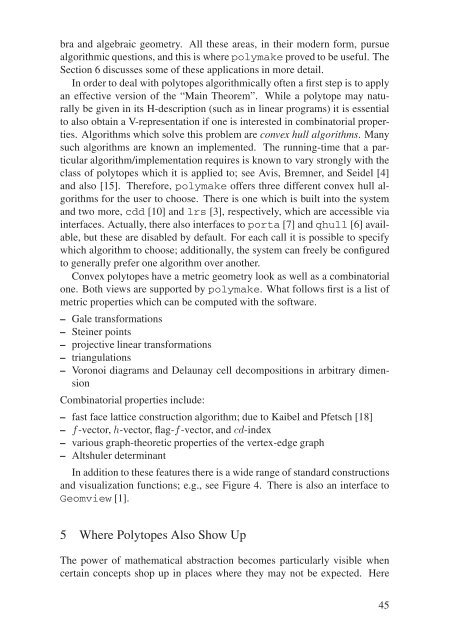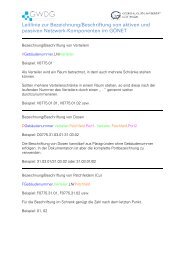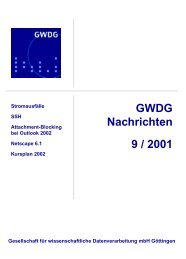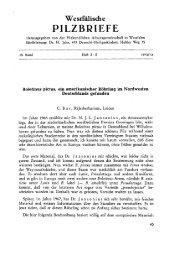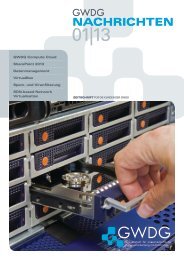Forschung und wissenschaftliches Rechnen - Beiträge zum - GWDG
Forschung und wissenschaftliches Rechnen - Beiträge zum - GWDG
Forschung und wissenschaftliches Rechnen - Beiträge zum - GWDG
Erfolgreiche ePaper selbst erstellen
Machen Sie aus Ihren PDF Publikationen ein blätterbares Flipbook mit unserer einzigartigen Google optimierten e-Paper Software.
a and algebraic geometry. All these areas, in their modern form, pursue<br />
algorithmic questions, and this is where polymake proved to be useful. The<br />
Section 6 discusses some of these applications in more detail.<br />
In order to deal with polytopes algorithmically often a first step is to apply<br />
an effective version of the “Main Theorem”. While a polytope may naturally<br />
be given in its H-description (such as in linear programs) it is essential<br />
to also obtain a V-representation if one is interested in combinatorial properties.<br />
Algorithms which solve this problem are convex hull algorithms. Many<br />
such algorithms are known an implemented. The running-time that a particular<br />
algorithm/implementation requires is known to vary strongly with the<br />
class of polytopes which it is applied to; see Avis, Bremner, and Seidel [4]<br />
and also [15]. Therefore, polymake offers three different convex hull algorithms<br />
for the user to choose. There is one which is built into the system<br />
and two more, cdd [10] and lrs [3], respectively, which are accessible via<br />
interfaces. Actually, there also interfaces to porta [7] and qhull [6] available,<br />
but these are disabled by default. For each call it is possible to specify<br />
which algorithm to choose; additionally, the system can freely be configured<br />
to generally prefer one algorithm over another.<br />
Convex polytopes have a metric geometry look as well as a combinatorial<br />
one. Both views are supported by polymake. What follows first is a list of<br />
metric properties which can be computed with the software.<br />
– Gale transformations<br />
– Steiner points<br />
– projective linear transformations<br />
– triangulations<br />
– Voronoi diagrams and Delaunay cell decompositions in arbitrary dimension<br />
Combinatorial properties include:<br />
– fast face lattice construction algorithm; due to Kaibel and Pfetsch [18]<br />
– f-vector, h-vector, flag-f-vector, and cd-index<br />
– various graph-theoretic properties of the vertex-edge graph<br />
– Altshuler determinant<br />
In addition to these features there is a wide range of standard constructions<br />
and visualization functions; e.g., see Figure 4. There is also an interface to<br />
Geomview [1].<br />
5 Where Polytopes Also Show Up<br />
The power of mathematical abstraction becomes particularly visible when<br />
certain concepts shop up in places where they may not be expected. Here<br />
45


